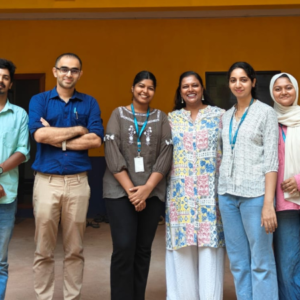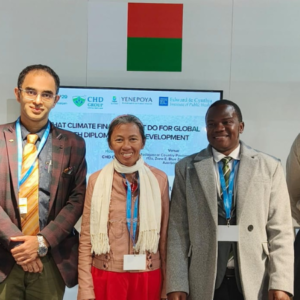Oral health is a vital, yet frequently neglected, aspect of overall well-being. It influences our ability to communicate, eat, and interact socially and plays a critical role in maintaining general health. The World Health Organization (WHO) has recognized the importance of oral health and prioritizes it within global health systems. However, in developing countries like India, addressing oral health remains a significant challenge, particularly among marginalized and underserved populations. This gap in care highlights the urgent need for targeted interventions and improved accessibility to oral health services.
In India, oral diseases such as dental caries, periodontal diseases, and oral cancer have become pressing public health concerns. These conditions, exacerbated by factors such as poor diet, high tobacco consumption, and limited access to health care, are widespread, especially in rural and underserved areas. Oral cancer constitutes around 5% of all cancers worldwide, but in India, it comprises about 40% of all cancer cases. Annually, nearly 60,000 new cases of oral cancer are reported in India. Alarmingly, over 5 deaths occur every hour due to oral cancer in the country, underscoring its high fatality rate(National Cancer Registry). In regions with high tobacco use, such as South-central Asia, oral cancer ranks among the top three most common cancers. Periodontal diseases affect approximately 51% of the Indian population, with 26.2% experiencing mild to moderate periodontitis and 19% suffering from severe cases(2020). The overall prevalence of dental caries was found to be 54.16%, age-specific prevalence showed a higher rate of 62% in individuals over 18 years, while it was 52% among those aged 3 to 18 years(2021). The country’s oral health services are predominantly provided by the private sector, leaving the government struggling to meet the needs of its population due to financial constraints. Oral health is closely linked to chronic diseases like diabetes and cardiovascular diseases. The lack of preventive measures and early diagnosis further compounds these issues, leading to severe outcomes, including tooth loss and impaired oral function. Tooth loss is a personal health issue and a public health concern, as it affects an individual’s nutrition and overall quality of life. In addition to these common conditions, specific populations are also vulnerable to oral health problems associated with HIV/AIDS, craniofacial anomalies, and dental trauma. Addressing these complex issues requires a comprehensive approach that integrates oral health into national health strategies.
Since 1981, WHO has highlighted the importance of oral health through various programs aimed at reducing the global burden of oral diseases. Its “Health for All by 2000” initiative and later oral health goals for 2020 have set the stage for developing effective, accessible oral healthcare systems. However, many countries, including India, have yet to fully embrace these recommendations. WHO recommends focusing on prevention and primary care, especially for low-income and marginalized populations. In developing countries with a critical shortage of dental professionals, training primary healthcare workers in preventive care could bridge the gap in rural areas. This approach is essential to addressing oral health disparities between urban and rural communities. India has 2.7 lakh registered dentists, exceeding the ideal dentist-to-population ratio of 1:5,000, but there is a significant urban-rural distribution gap. In 2019, only 3% of dentists (7,337 out of 254,283) worked in government service, creating a supply-demand issue, especially in rural areas. This shortage is further aggravated by the limited number of sanctioned positions for dentists in public facilities and the lack of regular recruitment to fill vacancies.
India has made attempts to draft a National Oral Health Policy, with initial efforts dating back to 1995. Unfortunately, these efforts have stalled due to a lack of motivation from policymakers and financial constraints within the healthcare system. Oral health remains a neglected area, with only a fraction of the country’s health expenditure dedicated to it. The current healthcare framework in India does not include a comprehensive national program that addresses the full spectrum of oral health, from prevention to rehabilitation. The absence of an integrated policy is especially problematic in rural and underserved areas, where access to affordable dental care is limited. Policymakers must prioritize oral health as part of broader public health initiatives. Integrating oral health into the existing healthcare and educational systems is crucial. Educational campaigns aimed at promoting healthy lifestyles, preventing tobacco use, and encouraging regular dental check-ups could significantly reduce the burden of oral diseases.
A standout example of a successful publicly funded comprehensive oral health program is Scotland’s Child-smile initiative. Launched in 2006, Child-smile is a national program designed to reduce oral health inequalities and improve children’s dental health. Funded by the Scottish Government, it has become a model for comprehensive oral health programs in developed countries. Child-smile primarily targets children, especially those from socioeconomically disadvantaged backgrounds, to promote oral health from birth through adolescence. The program integrates preventive dental care into daily routines in nurseries, schools, and community health settings. Instead of focusing solely on treatment, it emphasizes preventive care through education, early intervention, and regular monitoring. By addressing oral health issues early, Child-smile has been shown to reduce the need for costly dental treatments later in life. It has also successfully lowered dental decay rates, particularly in high-deprivation areas. By 2017, over 70% of Primary 1 (five-year-old) children in Scotland were free from obvious dental decay—marking a significant improvement over the previous years. Although this is an excellent example of a comprehensive oral health program, it focuses solely on children. For a developing country like India, there is a need for a national program that addresses oral health issues across all age groups and population segments to ensure widespread and equitable improvements in dental care.
In India, the sole national program dedicated to oral health focuses on combating fluorosis, both dental and skeletal, which has afflicted the country for over 85 years. High fluoride levels have been documented in numerous states (18 States and 1 UT), highlighting endemic fluorosis as a significant public health issue. To tackle this challenge, the Ministry of Health & Family Welfare, Government of India, introduced the “National Program for Prevention and Control of Fluorosis (NPPCF)” during the 11th Five Year Plan (2007-12). Since then, the initiative has been progressively expanded and is currently active in 157 districts across 18 states and 1 Union Territory. Additionally, fluorosis control has been integrated into the “Anemia Mukt Bharat” guidelines issued by MoHFW in April 2018.
For India to effectively address its oral health challenges, a comprehensive national program must include preventive, curative, and educational measures. A key focus should be on prevention by strengthening public health programs that promote oral hygiene, healthy diets, and tobacco cessation. Early diagnosis and regular check-ups can help prevent more severe oral health issues later in life. Additionally, improving access to affordable dental care, especially in rural and underserved areas, is essential. Raising awareness through nationwide educational campaigns is crucial, with schools and community programs playing a significant role in fostering healthy habits from an early age. Finally, policy and funding support should be increased to ensure that oral health initiatives are adequately resourced and reach all populations, not just those in urban areas. India’s oral health crisis cannot be ignored. A National Oral Health Program focused on prevention and fully integrated into primary healthcare is crucial. Ensuring that basic oral health services are affordable and accessible to all is not only necessary but urgent, to promote equitable health outcomes. By incorporating oral health into national health strategies, India can take a significant step toward reducing the burden of oral diseases and improving the quality of life for its citizens. Oral health is more than just about teeth; it is about the overall well-being of the entire nation. Now is the time for action.
REFERENCES
1. Association ID. National Oral Cancer Registry [Internet]. [cited 2024 Oct 11]. Available from: https://www.nocr.org.in/NOCR/OralCancerinIndia
2. Janakiram C, Mehta A, Venkitachalam R. Prevalence of periodontal diseases among the adults in India: A systematic review and meta-analysis. J Oral Biol Craniofacial Res. 2020 Oct 28;10:801–6.
3. Pandey P, Nandkeoliar T, Tikku A, Singh D, Singh M. Prevalence of Dental Caries in the Indian Population: A Systematic Review and Meta-analysis. J Int Soc Prev Community Dent. 2021 Jun 10;11:256–65.
4. Gambhir RS, Gupta T. Need for Oral Health Policy in India. Ann Med Health Sci Res. 2016 Apr 20;6(1):50–5.
5. Petersen PE. Priorities for research for oral health in the 21st Century – the approach of the WHO Global Oral Health Programme.
6. Strengthening of Oral Health Systems: Oral Health through Primary Health Care | Medical Principles and Practice | Karger Publishers [Internet]. [cited 2024 Oct 8]. Available from: https://karger.com/mpp/article/23/Suppl.%201/3/202618
7. CD-Alert-on-Fluorosis-Final-28-Apr-2022.pdf [Internet]. [cited 2024 Oct 13]. Available from: https://ncdc.mohfw.gov.in/wp-content/uploads/2024/05/CD-Alert-on-Fluorosis-Final-28-Apr-2022.pdf
8. ndip_scotland2017-P7.pdf [Internet]. [cited 2024 Oct 13]. Available from: https://www.scottishdental.nhs.scot/wp-content/uploads/2017/10/ndip_scotland2017-P7.pdf
9. Macpherson LM, Ball GE, King P, Chalmers K, Gnich W. Childsmile: The Child Oral Health Improvement Programme in Scotland. Prim Dent J. 2015 Dec;4(4):33–7.
10. Randhawa S. Indian Dentistry Is in Crisis – the New Dental Commission Bill Should Step Up – The Wire Science [Internet]. 2021 [cited 2024 Oct 13]. Available from: https://science.thewire.in/health/indian-dentistry-is-in-crisis-the-new-dental-commission-bill-should-step-up/
About the Author: Sangeetha M is MPH Scholar at Edward & Cynthia Institute of Public Health – Advanced Technical Cooperation Center with Yenepoya ( DU).
Disclaimer: Views expressed are the author’s own. Edward & Cynthia Institute of Public Health or Yenepoya (Deemed to be University) are not responsible for contents or opinions reflected in this article.
Sangeetha M
-
Sangeetha M#molongui-disabled-link
-
Sangeetha M#molongui-disabled-link
-
Sangeetha M#molongui-disabled-link




